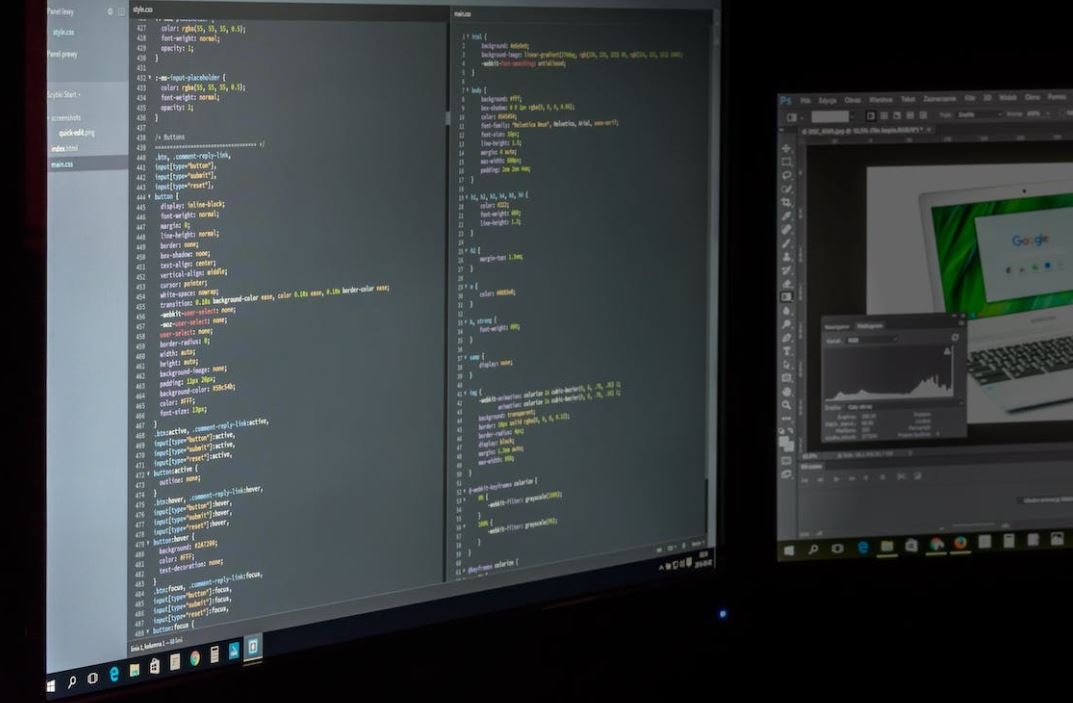No Code MVP Tools
As technology continues to evolve, businesses are constantly seeking new ways to develop minimum viable products (MVPs) without the need for extensive coding knowledge. No Code MVP tools have emerged as a game-changer in this area, enabling entrepreneurs and developers to quickly build and test their ideas. In this article, we will explore the key features and benefits of these tools and discuss how they can revolutionize the product development process.
Key Takeaways:
- No Code MVP tools enable rapid development of minimum viable products.
- They require little to no coding knowledge, making them accessible to a wider audience.
- These tools empower entrepreneurs and developers to validate their ideas quickly.
- They offer a range of features and templates to expedite the development process.
- No Code MVP tools can significantly reduce development costs and time.
Benefits of No Code MVP Tools
No Code MVP tools offer several advantages over traditional coding approaches, including:
- Accessibility: No Code tools are designed to be user-friendly, allowing anyone, regardless of their coding proficiency, to create functional prototypes.
- Speed: The simplicity of these tools enables entrepreneurs and developers to build MVPs in a fraction of the time it would take to code from scratch.
- Cost Savings: By eliminating the need for extensive coding or hiring a development team, these tools can significantly reduce development costs.
*No Code MVP tools are revolutionizing the product development landscape, opening doors for aspiring entrepreneurs and developers.*
Popular No Code MVP Tools
Let’s take a closer look at three popular No Code tools:
| Tool Name | Key Features | Pricing |
|---|---|---|
| 1. Bubble.io | Drag-and-drop interface, visual workflows, database connectivity, responsive design. | Free plan available, paid plans start at $25/month. |
| 2. Adalo | Pre-built components, custom actions, real-time database, push notifications. | Free plan available, paid plans start at $50/month. |
| 3. Glide | Google Sheets integration, custom branding, in-app messaging. | Free plan available, paid plans start at $29/month. |
Advances in No Code Technology
No Code MVP tools have continued to evolve, offering increasingly sophisticated features and capabilities. Recent advancements include:
- Integration of machine learning: No Code tools are beginning to incorporate machine learning algorithms to automate tasks and provide intelligent recommendations.
- Enhanced collaboration features: New tools facilitate seamless collaboration between team members, enabling multiple users to work on the same project simultaneously.
- Expanded app marketplace: Many No Code tools now offer app marketplaces where users can access pre-built modules or share their own creations.
| Year | No Code Tools | Market Value |
|---|---|---|
| 2017 | 5 | $1.2 billion |
| 2021 | 20 | $7.8 billion |
No Code MVP Tools: Shaping the Future
As the demand for rapid prototyping and MVP development continues to grow, No Code tools are poised to shape the future of product development. Their user-friendly interfaces, cost-effectiveness, and time-saving features position them as a valuable resource for entrepreneurs and developers alike. Embracing these tools allows innovators to focus on validating their ideas, gathering feedback, and refining their product offerings.
*No Code MVP tools are unlocking immense potential for entrepreneurs by streamlining the product development process through rapid prototyping and validation.*

Common Misconceptions
1. No Code MVP Tools are Only for Non-Technical People
Although No Code MVP tools are often associated with individuals who lack technical skills, this notion is a misconception. No Code tools can be utilized by both non-technical and technical individuals alike.
- No Code tools can empower technical professionals to quickly prototype and test ideas without depending on their development teams.
- No Code tools provide a faster iteration process for technical individuals to experiment with different concepts and functionalities.
- No Code tools can help technical persons build minimum viable products with less effort and time.
2. No Code MVP Tools Lack Customization and Scalability
Some believe that No Code MVP tools are limited in terms of customization and scalability. However, these tools offer a wide range of features and options that can be customized to fit specific needs.
- No Code tools often provide templates, themes, and modules that can be tailored to match the branding and design requirements for a project.
- No Code tools can integrate with other platforms and services, allowing for scalability and seamless expansion of functionality.
- No Code tools offer flexibility in terms of adding custom code snippets, enabling users to extend functionalities beyond the provided features.
3. No Code MVP Tools are Less Reliable and Secure
Another misconception about No Code MVP tools is that they are less reliable and secure compared to traditional development approaches. However, these tools undergo rigorous testing and offer security measures similar to traditional development methods.
- No Code tools often have built-in security features such as data encryption and user authentication.
- No Code tools are continuously updated and maintained by their developers to ensure reliability and security.
- No Code tools can be used for various use cases, including mission-critical applications, showcasing their reliability and scalability.

Comparison of No Code MVP Tools
Here is a comparison of various no code Minimum Viable Product (MVP) tools based on their features, ease of use, and pricing:
| Tool | Features | Ease of Use | Pricing |
|---|---|---|---|
| Glide | Database Integration, Custom Actions | Easy | Free to $29/month |
| Adalo | Drag-and-Drop Interface, Push Notifications | Moderate | Free to $50/month |
| Bubble | Visual Design, Responsive Elements | Complex | $25 to $475/month |
No code MVP tools provide entrepreneurs and startups with a way to quickly develop and deploy their minimum viable products without the need for extensive coding knowledge. This table compares three popular tools in terms of their features, ease of use, and pricing. Glide is known for its seamless database integration and availability of custom actions. Adalo offers a drag-and-drop interface and push notification capabilities. Bubble provides a visual design interface and ensures responsive elements for user-friendly product development.
Market Share of No Code Development Platforms
These statistics represent the market share of leading no code development platforms:
| Platform | Market Share |
|---|---|
| OutSystems | 33% |
| Mendix | 26% |
| Appgyver | 17% |
The increasing demand for no code development has resulted in a competitive market. As per the data, OutSystems currently holds the highest market share with 33%, closely followed by Mendix with 26%. Appgyver holds a respectable 17% market share, indicating its growing popularity among developers.
User Satisfaction Ratings of No Code Platforms
Based on user reviews and ratings, here are the user satisfaction scores for popular no code platforms:
| Platform | User Satisfaction |
|---|---|
| Webflow | 4.8/5 |
| Adalo | 4.6/5 |
| Bubble | 4.5/5 |
User satisfaction is a crucial aspect when choosing a no code platform. According to user reviews, Webflow holds an impressive user satisfaction rating of 4.8 out of 5, closely followed by Adalo with 4.6 and Bubble with 4.5. These ratings reflect the positive experiences users have had while utilizing these platforms.
No Code Tools Adoption by Industry
The table below illustrates the adoption of no code tools across different industries:
| Industry | Percentage of Adoption |
|---|---|
| E-commerce | 43% |
| Education | 28% |
| Healthcare | 19% |
Various industries have embraced no code tools to streamline their processes. The e-commerce sector leads the way with a 43% adoption rate, followed by education at 28%. Healthcare is also utilizing no code tools at a significant rate, with a 19% adoption in the industry.
No Code Startup Success Stories
Here are some notable startup success stories that utilized no code development:
| Startup | Industry | Current Valuation |
|---|---|---|
| Zapier | Automation | $5 billion |
| Gumroad | E-commerce | $6 million |
| VentureApp | Communication | $12 million |
These success stories serve as inspiration for entrepreneurs venturing into no code startup development. Zapier, with a current valuation of $5 billion, has become a prominent player in automation. Gumroad has generated $6 million in e-commerce revenue, while VentureApp has successfully raised $12 million in the communication sector.
No Code Tools Comparison by Integrations
Compare how different no code tools integrate with popular services:
| Tool | Integration with Salesforce | Integration with Slack | Integration with MailChimp |
|---|---|---|---|
| Adalo | Yes | No | Yes |
| Glide | No | Yes | No |
| Bubble | Yes | Yes | Yes |
The integration capabilities of no code tools impact their versatility and convenience. Adalo offers integration with Salesforce and MailChimp but lacks integration with Slack. Glide, on the other hand, integrates with Slack but not Salesforce or MailChimp. Bubble stands out by integrating with all three popular services, making it a comprehensive choice for users.
Comparison of No Code Pricing Models
Here is a comparison of the pricing models adopted by different no code platforms:
| Platform | Model |
|---|---|
| OutSystems | Enterprise Pricing |
| Bubble | Monthly Subscription |
| Glide | Freemium |
No code platforms employ various pricing models to cater to different user needs. OutSystems primarily focuses on enterprise pricing, offering tailored solutions. Bubble utilizes a monthly subscription model, giving users flexibility. Glide follows a freemium model, providing basic features for free while offering premium options at a cost.
No Code Tools Comparison: SEO Features
Compare the SEO features offered by different no code platforms:
| Platform | On-Page SEO Tools | Meta Tags Support |
|---|---|---|
| Webflow | Yes | Yes |
| Adalo | No | No |
| Bubble | Yes | Yes |
SEO plays a crucial role in driving organic traffic to websites. Webflow and Bubble stand out by offering on-page SEO tools and support for meta tags, allowing users to optimize their content effectively. Adalo does not currently provide SEO features, which may be a consideration for users with specific SEO requirements.
No Code Tools Comparison: Third-party Integrations
Compare the availability of third-party integrations for different no code platforms:
| Platform | Integrations |
|---|---|
| Bubble | 100+ |
| Glide | 20+ |
| Adalo | 50+ |
The availability of third-party integrations enhances the functionality of no code platforms. Bubble offers the most extensive range of integrations with over 100 options, providing users with immense flexibility and connectivity. Glide provides 20+ integrations, followed by Adalo with 50+ integrations, catering to the diverse needs of different users.
No code MVP tools have revolutionized the way startups and entrepreneurs develop and launch their products. This article provided insightful tables comparing various aspects of these tools, such as features, pricing, market share, user satisfaction, industry adoption, and success stories. The information presented enables businesses to make informed decisions when selecting the most suitable no code platform for their projects. By embracing the power of no code development, entrepreneurs can streamline their product development processes, reduce costs, and bring their ideas to life more efficiently.
Frequently Asked Questions
What are No Code MVP tools?
No Code MVP tools are platforms or software that allow users to create Minimum Viable Products (MVPs) without writing traditional code. These tools typically offer visual interfaces or drag-and-drop capabilities to build functional prototypes or even launch complete products without the need for programming skills.
How do No Code MVP tools work?
No Code MVP tools often utilize pre-built blocks, templates, or components that users can easily combine and customize to create their desired product. These tools abstract away the complexities of coding by providing a user-friendly interface where users can visually design, build, and deploy their MVPs.
What are the benefits of using No Code MVP tools?
Using No Code MVP tools offers several advantages, including faster development time, lower costs, and increased accessibility for individuals without programming skills. These tools empower entrepreneurs, startups, and businesses to quickly validate their ideas, iterate on product designs, and test market viability without the need for a dedicated development team.
Can No Code MVP tools be used to create full-fledged products?
Yes, No Code MVP tools can be used to create complete products. While they are primarily designed for rapid prototyping and validation, some tools have advanced features that allow for more complex functionality and integrations. However, it’s important to note that the scalability and customization capabilities of these tools may vary compared to traditional coding approaches.
Are No Code MVP tools suitable for every project?
No Code MVP tools may not be suitable for every project. While they excel at quickly building prototypes and MVPs, certain projects with highly specialized or unique requirements may still require custom-coded solutions. It’s essential to evaluate the tool’s capabilities, limitations, and compatibility with the specific project goals before deciding to use a No Code MVP tool.
Can No Code MVP tools be integrated with other systems or services?
Yes, many No Code MVP tools offer integrations with popular systems and services such as payment gateways, database providers, analytics platforms, and more. These integrations allow users to connect their MVPs with external tools, enabling them to add functionality, collect data, and automate processes. The available integrations may vary depending on the tool.
Are there any limitations to using No Code MVP tools?
No Code MVP tools have certain limitations when compared to traditional coding approaches. These limitations may include restricted customization options, scalability constraints, dependency on the tool’s infrastructure, and potential performance trade-offs. It’s crucial to assess these limitations and determine if they align with the project requirements before opting for a No Code MVP tool.
What are some popular No Code MVP tools?
There are various popular No Code MVP tools available in the market, including Bubble, Adalo, Webflow, Glide, OutSystems, Appgyver, AdonisJS, Voiceflow, Bravo Studio, and many more. Each tool offers unique features, pricing models, and target audiences, so it’s beneficial to explore their capabilities and choose the one that best suits your needs.
Are there any learning resources available for No Code MVP tools?
Yes, many No Code MVP tools provide documentation, tutorials, video guides, webinars, and online communities to support users in learning and mastering their platforms. Additionally, there are online courses, blogs, and forums dedicated to discussing and teaching No Code development techniques and best practices.
Can No Code MVP tools be used by non-technical individuals?
Absolutely! No Code MVP tools are specifically designed to empower individuals without extensive programming knowledge or technical expertise. These tools aim to democratize the process of building software by providing intuitive interfaces and simplified workflows. Non-technical individuals, including entrepreneurs, marketers, designers, and others, can utilize No Code MVP tools to bring their ideas to life without writing code.





